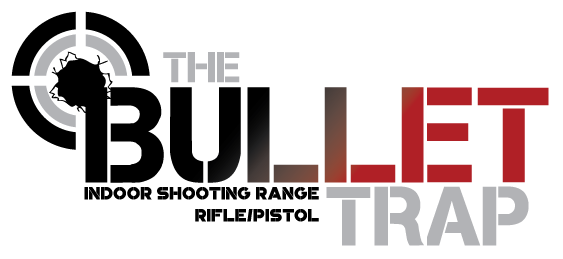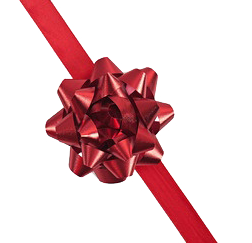Bullet Trap Pistol Leagues
The Bullet Trap Pistol Leagues are established to enhance the shooting experience of our customers by providing an environment where shooters of all skill levels can practice and improve their pistol marksmanship in an atmosphere of camaraderie and friendly competition with fellow shooters. The leagues are open to any Bullet Trap Member (Black, Silver, Gold, or Platinum).
League members compete in weekly matches every Monday night starting at 5:00 p.m. Each match has a defined course of fire (usually 45 rounds) where shooters engage targets in a variety of scenarios featuring timed sequences, multiple targets, special lighting effects, and tactical situations.
The leagues are organized by bullet caliber as follows:
Small : 22, 25 and 32 calibers
Medium: 9mm, 380, 38 Special, 38 Super, 357 magnum
Large : 40, 41, 44, 45 calibers, and 10mm
Shooters can compete in any or all of the calibers. Match fees are $15 for a single caliber, $25 for two calibers, or $30 for all three, and include range fees, targets, prize money and the league banquet at the end of the season.
Click here for complete information on the league rules and procedures
Click here for an alert when registration opens for the next season
League Rules and Procedures – Fall 2017
The Bullet Trap wishes to enhance the shooting experience of its customers by providing an environment where shooters of all skill levels can practice and improve their pistol marksmanship in an atmosphere of camaraderie and friendly competition with fellow shooters.
Safety
As always, SAFETY IS OUR HIGHEST PRIORITY. We want everyone to enjoy their league experience, but it’s no fun if someone gets hurt. To this end:
- All range rules and safety procedures will be in full force during the competition.
- Guns must be cased and unloaded at all times when outside of the range.
- Shooters may congregate in the classroom, lobby or lounge while waiting for their relay to be called
to the range. However, NO GUNS OR AMMO WILL BE ALLOWED IN THE CLASSROOM AT ANY TIME. - Guns MUST be uncased and re-cased ONLY in the shooting booth.
- Uncased guns MUST be pointed in a safe direction at ALL TIMES.
- Shooters must heed and obey all commands of the Range Commander.
- Each magazine may contain ONLY the number of rounds specified for the set (typically 5 rounds).
- DO NOT insert the magazine into the gun until the “lock and load” command is given.
- Revolver shooters: DO NOT close the cylinder or loading gate until the “lock and load” command is given.
League Structure
The Bullet Trap Pistol Leagues are open to all Bullet Trap members. Shooters are organized into three leagues based on bullet caliber:
Small Caliber League: .22 cal, .25 cal, and .32 cal
Medium Caliber League: .38 cal, .380 cal, 9 mm, .357 cal
Large Caliber League: .40 cal, 10 mm, .44 cal, .45 cal
If there are fewer than 8 people shooting large caliber weapons, the Large Caliber League will be merged into Medium.
Individual Competition – All shooters will compete for prizes based on their individual scores within their respective caliber league. See “Prizes” for details.
Team Competition – Shooter may form teams to compete for prizes based on aggregate team scores. See “Prizes” for details. Team formation rules are as follows:
Optional – Team participation is optional. Shooters who do not join a team will be eligible only for individual prizes.
4-Members – Each team will consist of 4 members.
Caliber Independent – Teams can be composed of members shooting the same caliber or mixed caliber. Multi-caliber shooters can be on one team for each caliber they shoot.
Handicap Based – Team scores will be the sum of the raw scores of the individual members plus their handicaps. Individual handicaps will be calculated each week as the difference between the shooter’s average of the three best scores from the last five matches, and the basis score of 400 points. So a shooter with an average of 400 points or better will have a handicap of zero. A shooter with an average of 275 will have a handicap of 125. If the same shooter fires a raw score of 290, he will contribute a net score of 415 to the team total.
Formed After Week 3 – Due to the handicap calculation, teams will formed after the third match of the season.
Missed Matches – If a team member misses a match, it must be made up by Tuesday of the following week (see “Make-Up Matches”). If the shooter fails to shoot the make-up, he will be given a blind score of 300 points and no handicap; essentially, a scratch shooter who has a bad week.
Equipment
Firearm: Any handgun firing the above calibers in either standard or magnum load, and having a capacity of at least 6 rounds, may be used in competition. Revolvers may be double action or single action, but any revolver (especially single action only) may be at a disadvantage in some circumstances (See Course Of Fire).
Sights: All competitions will be fired using OPEN SIGHTS ONLY. Open sight enhancements such as hooded front sight, white dots, day glow dots, and night glow dots are permitted. Optical aids or pointing devices such as scopes, red dots, holographs and lasers are NOT PERMITTED.A gun with an integral laser device may be used as long as the device can be disabled.
Ammunition: Shooters will provide their own ammo. Reloads are permitted, but the shooter is responsible for its reliability and compatibility with the firearm. Limited alibi provisions will be made for misfires and squib rounds (see Alibi Rules below)
League Schedule
The 12-week 2017 Fall season will begin on September 18, with the last match on December 4.
Regular Match: League matches will be on Mondays from 5:00 PM until roughly 7:30 PM. Relays will be a maximum of 8 shooters, with the first relay taking to the range promptly at 5:00 PM. The course of fire normally takes about 20-25 minutes, so successive relays will start at intervals of 25-30 minutes. Relays will be formed on a reservation or standby basis.
Reservation: Spots on a relay can be reserved online like a golfing tee time. The Weekly Newsletter will contain a link to the reservation web page and instructions for reserving a start time. Relay start times are approximate. You should be in the building and ready to take to the range at least 5 minutes prior to your start time. If you arrive after your relay start time and the relay is already on the range, you will go on Standby status.
Standby: Shooters who do not reserve a relay online will be assigned to open relay spots on a first-come-first -served basis. All Standby shooters MUST BE IN THE BUILDNG no later than 6:30 PM. Otherwise you may not arrive in time for the last relay. Shooters arriving after the last relay starts will not be allowed to shoot and must fire a make-up match.
Make-up Matches: Missed matches can be made up as follows
- A missed match can be made up on Monday or Tuesday OF THE FOLLOWING WEEK.
- The Monday make-ups will immediately follow the last relay of the regular match.
- The Tuesday make-ups will be at 8:00 PM. Tuesday makeup shooters must be IN THE BUILDING BY 7:45 PM. The match will begin PROMPLY at 8:00 PM.
- If the shooter fails to make up a match by Tuesday of the following week, that match will be forfeited.
- A maximum of 3 makeup matches will be allowed per shooter per league.
Fees
League fees cover range time, targets, the end-of-season banquet, and prizes, and are payable each week at the beginning of each match or makeup night. Shooters may participate in any or all of the leagues based on a sliding fee scale:
One league – $15
Any two – $25
All Three – $30
Prizes
Individual Prizes
Prizes for the individual competition will be in the form of gift cards redeemable for merchandise at The Bullet Trap, and will be awarded based on aggregate scores for the season using the Lewis Class System. The Lewis Class System is generally recognized as the fairest method of distributing prizes in a tournament composed of individual competitors with widely varying skills. It provides an opportunity for all competitors to share in the prizes and encourages skill improvement to move within each class and into the higher classes. The Lewis method has well defined procedures governing how to handle tie scores, uneven class size and others. For a complete explanation, follow this link: http://www.ga-sportingclays.org/lewissystem.pdf
Here is the gist of how it works:
In a straight tournament, X number of prizes would be awarded to the top X shooters in each caliber league, so the best shooters always walk away with everything. In a Lewis tournament, shooters in each league are still ranked by score, but the ranking is further sub-divided into classes, and the prizes are distributed to the top shooters in each class.
Several methods can be used to determine the class structure and prize distribution. In our case, we will have 3 classes per league with a minimum of 4 shooters in a class. A league with 7 or fewer shooters will have only 1 class. A league with 8 -11 shooters will have only 2 classes. The prizes will be awarded to the highest season score in each class as follows:
Class I: $25
Class II: $20
Class III: $15
Thus there can be up to 3 prizes awarded in each league totaling $60. To be eligible for a prize, a shooter must complete a minimum of 10 matches.
To illustrate how this will work, consider a league with 14 shooters. At the end of the season, the field would be ranked by aggregate score from 1st to 14th, just like a straight tournament. Then the class structure would be applied. Class I would be the top four shooters, Class II would be the fifth through seventh placed shooters, and Class III would be the tenth position and below. The prize distribution would then be:
Class I: 1st place $25
Class II: 5th place $20
Class III: 10th paloce $15
The Class structure will change from week to week as scores accumulate, and will be shown starting in Week 4 on the weekly standings sheets e-mailed to all members. This provides the opportunity for shooters of all skill levels to vey for a prize position throughout the season.
Team Prizes
Weekly – Each week, the team with the highest total net score (raw scores plus handicaps) will be awarded a cash prize of $20 ($5 per team member).
Season – A point system will be used to determine the seasonal champions. Each week,
points will be awarded to the three teams with the best total net scores; 3 points to the highest, 2 points to the next highest, and 1 point to the third highest. Points will be accumulated for the season and the three teams with the highest point totals at the end of the season will receive Bullet Trap gift cards as follows:
1st Place- $40 per team member ($160)
2nd Place- $30 per team member ($120)
3rd Place- $25 per team member ($100)
Most Improved Award
In addition to the Class and Team prizes, there will be a $25 gift card awarded to the most improved shooter in each league. The prize will be awarded based mainly on a combination of scores in Week 3 and Week 11, the shooter’s 3-week moving average throughout the season, and the League Coordinator’s assessment of the shooter’s overall performamce.
Course of Fire
Generally, each shooter will fire 3 stages of 15-18 rounds each (total of 45 – 54 rounds required). Each stage will be fired in sets of 5-6 rounds each. All sets will be timed, ranging from 30 seconds to 10 seconds depending on the scenario. Targets will typically be repositioned between each set. Target and stage scenarios will vary each week and will be published in the weekly newsletter several days prior (usually Wednesday) to each match. In addition, the COF will be explained by the Range Commander at match time.
Note: Some COFs require a reload on the clock, so, it is advisable to have at least one extra magazine (semi-autos) or a speed loader (DA revolvers). Single action revolvers will be at a disadvantage.
Range Commands
Shooters will be guided through each set of the COF commands from the Range Commander. Shooters will take action only when instructed to do so. The range commands are grouped into Preparation, Lock and Load, Commence Fire, and Cease Fire.
Preparation
Range Commander: “Shooters, prepare your magazines with X rounds for the next set and
move your targets to XX feet when you are ready to start”
Shooter: Load at least one magazine with the number of rounds specified for the set
(usually 5).
NOTE: Revolver shooters, you may insert rounds into the chambers at this time, but DO NOT close the cylinder or loading gate until the “Lock and load” command is given.
Shooters may also load multiple magazines for the entire stage if desired.
DO NOT insert the magazine into the gun at this time.
When ready to proceed with the set, the shooter moves the target carrier to the distance specified by the Range Commander. When all targets are at the correct position, the Range Commander assumes that all shooters are ready to load.
Lock and Load
Range Commander: “Shooters, lock and load X rounds. Assume a ready position”
Shooter: Insert a loaded magazine into the gun and close the action. Revolver shooters
may close cylinders and position the first round at this time.
Grip your gun as per your style, KEEPING YOUR TRIGGER FINGER ON THE GUN FRAME, assume a ready position and wait for the signal to commence firing. A ready position means that the muzzle of your gun is well below your shoulders so that the gun must be raised significantly to engage the target once the command to fire is given. Acceptable ready positions are:
Low Ready: A low ready position means that your gun is held with arms fully extended at an angle approximately half way between straight down (vertical) and the shooting position (horizontal) with finger off the trigger. Your hands must be well below your shoulders and the muzzle basically pointed at the floor
about 15 feet downrange.
Contact Ready: At contact ready, the gun is held with both hands, finger off the trigger, grip against the torso, with forearms parallel with the floor and elbows against the ribs.
The Range Commander will not allow you to fire until you are at a proper ready position.
Commence Firing
Range Commander: “Shooters, you will have (xx min/sec) to fire (… course of fire).” Within a few seconds, the Range Commander will announce “COMMENCE FIRING!”.
Shooter: If you are NOT ready to proceed with the set, shout loudly “NOT READY ON
LANE ___!”. The Range Commander will wait a bit and then repeat the COF call. At the commence firing command, raise you gun from ready and engage the target.
Cease Firing
Range Commander: When time has expired for the set, the Range Commander will announce
“CEASE FIRE! Make your guns safe!”
Shooter: Cease firing, clear your gun and lay it on the tray, action open. This completes
the set. Await the next command.
Alibis
Shooter: If, while firing the set, the shooter experiences a misfire, failure to feed, or other gun/ammo malfunction that prevents completing the set, the shooter must IMMEDIATELY lay the gun down (muzzle pointing downrange) and step out of the shooting booth. When the set is complete, the Range Commander will assess the malfunction and determine if an alibi will be allowed. Most gun and ammo malfunctions are valid alibis. Examples:
- Failure to feed
- Failure to extract/eject
- Failure to fire/squib
- Double Feed
- Stove Pipe
Shooter errors are NOT alibis. Typical examples
- Did not load enough rounds in the magazine
- Did not charge the first round
- Did not insert the magazine securely
If the alibi is valid, the shooter will be allowed to complete any unfired rounds as directed by the Range Commander.
IMPORTANT: All alibis must be validated by the Range Commander. Therefore, the shooter must not attempt to clear the malfunction. If the shooter attempts to clear the malfunction or otherwise tampers with the gun before the Range Commander inspects it, the alibi will not be allowed.
Alibi Restriction: Shooters are responsible for the reliability of their firearm and ammunition. Excessive malfunctions are disruptive to the flow of the match and lengthen an already tight schedule. Therefore, a shooter who experiences more than 2 alibis for the same cause will not be allowed any additional alibis for that cause.


